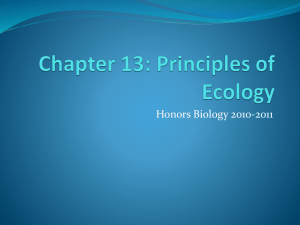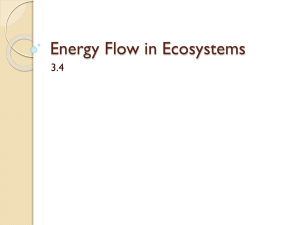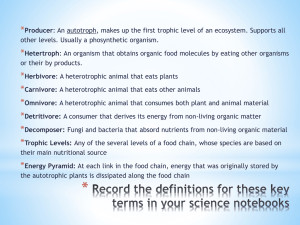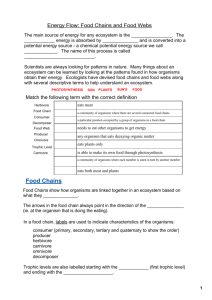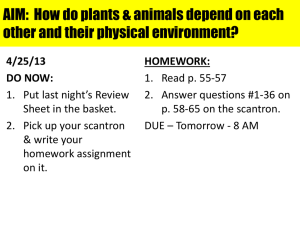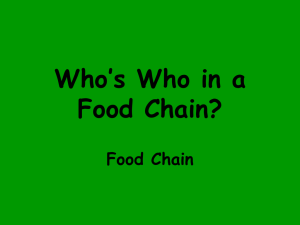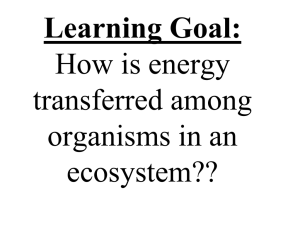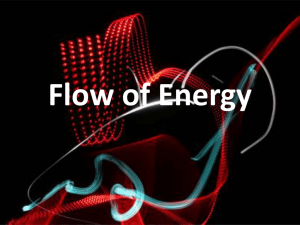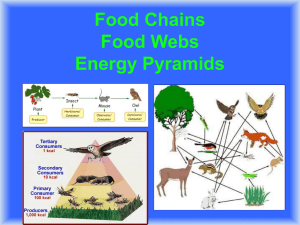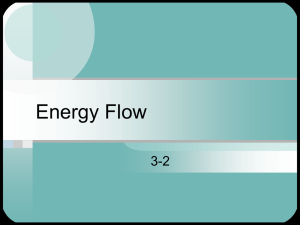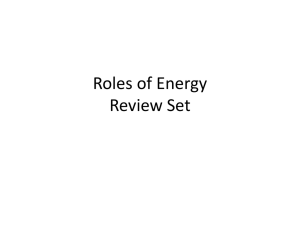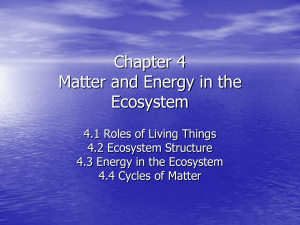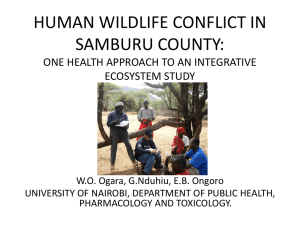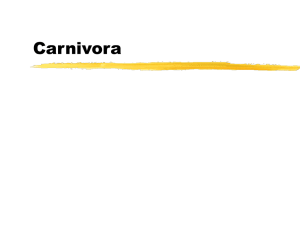Trophic Levels
advertisement
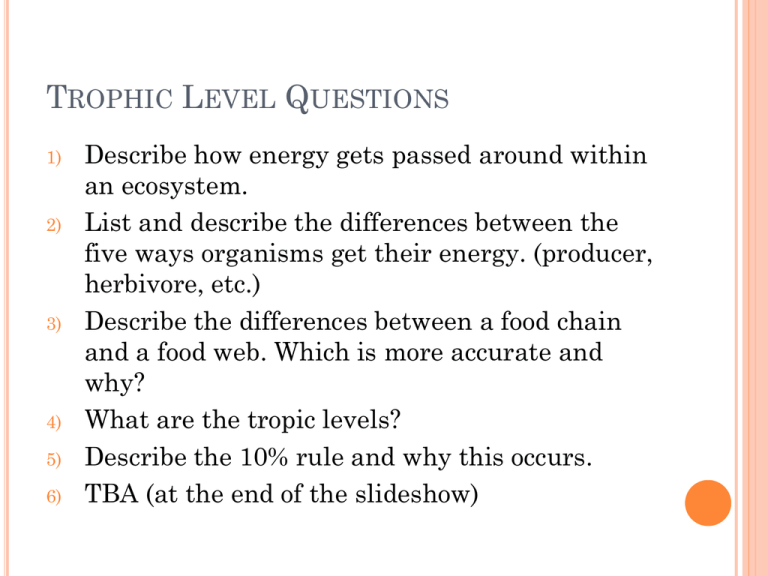
TROPHIC LEVEL QUESTIONS 1) 2) 3) 4) 5) 6) Describe how energy gets passed around within an ecosystem. List and describe the differences between the five ways organisms get their energy. (producer, herbivore, etc.) Describe the differences between a food chain and a food web. Which is more accurate and why? What are the tropic levels? Describe the 10% rule and why this occurs. TBA (at the end of the slideshow) TROPHIC LEVELS How energy gets around and ecosystem. ENERGY TRANSFER Each time an organisms eats another organisms, energy transfer occurs. Food chains, food webs, and trophic levels tell us how energy transfer occurs. Each step in the chains or webs represent the transfer of energy. Each time energy is transferred from one level to another, some energy is lost as heat and less energy is available for organisms at the next level. PRODUCER Makes it’s own food through photosynthesis. Example: grasses, ferns, trees, algae HERBIVORE Energy comes from producers. Example: cow, sheep, deer, grasshoppers CARNIVORE Get energy from other consumers. Example: lions, hawks, spiders, sharks, whales OMNIVORE Get energy from both producers and consumers Example: bears, pigs, gorillas, rats, cockroaches, humans DECOMPOSER Breaks down dead organisms in an ecosystem and returns nutrients to soil, water, and air. Examples: fungi and bacteria FOOD CHAINS Food chain: sequence in which energy is transferred from one organism to another. FOOD WEBS Show many feeding relationships that are possible in an ecosystem. Quaternary consumers • Trophic Levels Carnivore Carnivore Tertiary consumers Carnivore Carnivore Secondary consumers Carnivore Carnivore Primary consumers Zooplankton Herbivore Producers Plant Figure 19.21 A terrestrial food chain Phytoplankton A marine food chain CONSUMERS Organisms which eat other organisms to obtain energy. 1. Primary Consumer: eats producers 2. Secondary Consumer: eats primary consumers. 3. Tertiary Consumer: eat secondary consumers 4. Quaternary Consumer: Eat Tertiary consumers Quaternary, tertiary, and secondary consumers Tertiary and secondary consumers Secondary and primary consumers Primary consumers Producers (plants) Figure 19.23 10% RULE 90% of the energy at each trophic level is used to carry out functions of living. Only 10% is available to the next trophic level. http://www.brainpop.com/science/energy/energypyr amid/ What happens to energy as you go up trophic levels? Why? Tertiary consumers 10 kcal Secondary consumers 100 kcal Primary consumers Producers 1,000 kcal 10,000 kcal Figure 19.26 6) The feeding relationships in an ecosystem – Think of a ecosystem and 12 organisms that live in it. Create a food web and include at least one organism for each trophic level. (Show who eats who.) Also label 6 abiotic factors that are part of your ecosystem. 12.3 QUESTIONS 1-6 POSTER ASSIGNMENT Draw an Ecosystem with 12 organisms. Include at least one from each trophic level (producers, primary, secondary, tertiary, quarternary consumers, and decomposers). Show who eats who. List 6 abiotic factors that are part of your ecosystem. On the back, describe how they affect organisms in the ecosystem. Include at least 1 ecosystem cycle (water, nitrogen, and/or carbon cycle). Provide description of cycle on back. (You will be presenting these to the class!!!)




